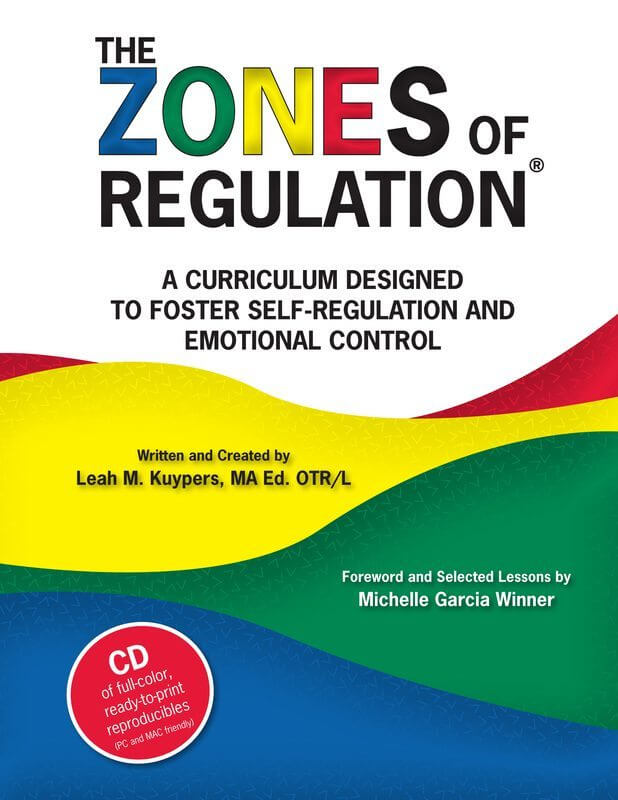Zones Of Regulation Autism
Zones of Regulation Autism: A Comprehensive Guide
The Zones of Regulation is a popular framework used to help individuals, especially those with autism, develop self-regulation skills. It provides a visual representation of different emotional states and teaches individuals how to recognize and manage their emotions effectively. In this guide, we will explore the Zones of Regulation in depth and offer valuable insights on how to implement it in your daily life. So let's dive right in!
The Basics: Understanding the Zones
The Zones of Regulation is divided into four color-coded zones, each representing a specific emotional state:
Zone 1: The Blue Zone

The Blue Zone is often associated with feeling sad, tired, sick, or bored. People in this zone may exhibit behaviors such as crying, sleeping, or isolating themselves. It's essential to recognize when you or someone else is in the Blue Zone and take steps to address the underlying emotions.
Zone 2: The Green Zone

The Green Zone represents a calm and focused state of mind. People in this zone typically feel happy, content, or ready to learn. It's an ideal zone for engaging in activities that require concentration and social interaction.
Zone 3: The Yellow Zone

The Yellow Zone signifies a heightened state of emotions. People in this zone may experience frustration, anxiety, excitement, or stress. It's crucial to identify the triggers that lead to the Yellow Zone and practice appropriate strategies to self-regulate and return to the Green Zone.
Zone 4: The Red Zone

The Red Zone represents an extremely intense emotional state. People in this zone may feel anger, rage, terror, or extreme joy. It's essential to ensure safety and support individuals in the Red Zone by providing calming strategies and reassurance.
Using the Zones of Regulation for Autism
The Zones of Regulation is particularly beneficial for individuals with autism, as it provides a structured and visual framework for understanding and managing emotional states. Here are some ways to incorporate the Zones of Regulation into the lives of individuals with autism:
1. Visual Supports
Individuals with autism often respond well to visual supports. Creating visual materials, such as posters or flashcards, depicting the Zones of Regulation can help individuals understand and identify their emotions accurately. Displaying these materials in various environments, such as classrooms or homes, can act as reminders for self-regulation.
2. Social Stories
Social stories are personalized narratives that describe specific situations and appropriate emotional responses. They can be used to teach individuals with autism about different emotional states and how to transition between zones effectively. Social stories should focus on explaining why self-regulation is essential and provide guidance on using specific strategies.
3. Sensory Strategies
Individuals with autism often benefit from sensory strategies to regulate their emotions. Sensory tools, such as fidget toys or weighted blankets, can help individuals move from the Red or Yellow Zone into the Green Zone. Sensory breaks and calming activities, like deep breathing exercises or listening to calming music, can also be effective in self-regulation.
Frequently Asked Questions (FAQs)
Q1: How can I help someone in the Red Zone?
A1: When someone is in the Red Zone, it's crucial to prioritize their safety. Avoid triggering situations and provide a calm and non-threatening environment. Encourage deep breathing exercises or offer sensory tools that may help them regulate their emotions. Remember to provide reassurance and avoid judgment.
Q2: How do I teach the Zones of Regulation to a child with autism?
A2: When teaching the Zones of Regulation to a child with autism, it's important to use visual supports and simplified language. Begin by explaining each zone and its associated emotions. Utilize social stories and interactive activities to engage the child and offer practical examples of self-regulation strategies. Consistency and repetition are key.
Q3: Can the Zones of Regulation be used by adults with autism?
A3: Absolutely! The Zones of Regulation is a versatile framework suitable for individuals of all ages. It provides a common language for understanding and managing emotions effectively. Adults with autism can benefit from using the Zones of Regulation to increase self-awareness, improve emotional regulation, and enhance social interactions.
Remember, the Zones of Regulation is a powerful tool that can positively impact the lives of individuals with autism. By implementing the appropriate strategies and providing ongoing support, we can empower individuals to achieve self-regulation and emotional well-being.
Now that you have a better understanding of the Zones of Regulation and its significance for individuals with autism, embrace this framework, and start fostering emotional growth and self-regulation!
The Zones Of Regulation - Autism Awareness
 Image Source : autismawarenesscentre.com
Image Source : autismawarenesscentre.com regulation navigating autism autismawarenesscentre
Zones Of Regulation - Teaching Autism | Zones Of Regulation, Autism
 Image Source : www.pinterest.com
Image Source : www.pinterest.com regulation
Zones Of Regulation Poster - Autism Awareness
 Image Source : autismawarenesscentre.com
Image Source : autismawarenesscentre.com regulation zones poster autism awareness
Grab These Free Posters To Add To Your Zones Of Regulation Resources
 Image Source : www.pinterest.com
Image Source : www.pinterest.com regulation zones autism social posters emotional teaching learning self strategies skills resources behavior lessons kids grab these add emotions visit
Strategies Problem Solving Wheel | Zones Of Regulation, Self Regulation
 Image Source : www.pinterest.com
Image Source : www.pinterest.com regulation strategies zones self emotional solving problem wheel autism homedecoration nu skills coping social important
Zones Of Regulation | Zones Of Regulation, Autism Teaching, Regulators
 Image Source : www.pinterest.com
Image Source : www.pinterest.com Zones Of Regulation Iep Goals
 Image Source : milliealexander.z13.web.core.windows.net
Image Source : milliealexander.z13.web.core.windows.net Zones Of Regulation | Autism Teaching, Zones Of Regulation, Social
 Image Source : www.pinterest.com
Image Source : www.pinterest.com autism zones regulation teachingautism dough
Zones of regulation poster. Grab these free posters to add to your zones of regulation resources. Autism zones regulation teachingautism dough. Zones of regulation. Zones of regulation